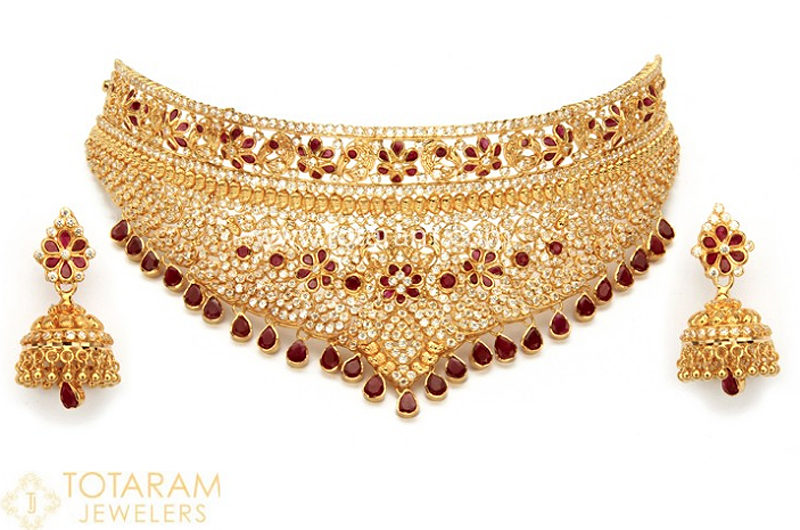When traveling to India to attend a wedding, yours or someone else’s, it’s a good idea to learn about the incoming and outgoing Indian Customs regulations and allowances for gold jewelry. Totaram Jewelers, an online jewelry store, offers the following information and and advice to make sure your jewelry is both safe and free of expensive tariffs and taxes.
As per the latest Indian customs regulation, a male passenger can carry up to 20 grams gold jewelry duty-free into the country, provided that it has a maximum value of Rs. 50,000 (App $735). On the other hand, if you are a female passenger, your duty-free gold limit is 40 grams, with a maximum worth of Rs. 100,000 (App $1470). These rules also apply to children, as long as they have been living abroad for longer than a year. Please note: the duty-free allowance is ONLY for plain gold jewelry and does not include studded gems or diamond jewelry or any other form of gold.
Gold ornaments that are brought into India which exceed these limits will be subject to a 10% customs duty. Also, if you are planning on bringing other forms of gold into India, you may have to pay duties on it. If you are taking gold in any form other than jewelry, declare it! The duty-free allowance in India is ONLY for gold jewelry and NOT for gold coins, bars or biscuits.
4 Steps to Minimize Problems When Taking Gold Jewelry to India:
- Get Your Jewelry Appraised: It is good practice to have receipts, appraisal with photographs such that jewelry being carried is identifiable. To be clear, if your intention is to take the jewelry back out of India when you leave, you should be prepared to present appraisals so the jewelry can be documented. If the jewelry has been originally bought in India, you will need to provide proof to the custom officials. In the event the items are not identifiable and cannot be documented, the worst thing that can happen is that your jewelry items will be held by customs, a receipt will be given to you and you can take it back when you leave India.
- Declare Your Jewelry: In the customs declaration form, a traveler should declare all gold jewelry he/she is wearing or carrying. Also, if a passenger is carrying more than the duty-free gold jewelry allowance, they should consider declaring the jewelry items on arrival in India with the customs authorities and get the items endorsed on their passports. To further reduce harassment, Indian customs has proposed that a traveler be charged 10% of the duty, which he/she can reclaim on his/her return. Indian customs will depute a jewelry appraiser to assess the value of gold jewelry. For those who carry a lot of gold/jewelry and deliberately fail to declare the items on arrival, their gold/jewelry items can be confiscated and they can face fines and prosecution under the Customs laws of India. NRIs/US Citizens should also keep in mind that when they take jewelry to India from countries like USA and Canada they maybe questioned by customs officials on their return.
- Carry a Reasonable Amount: The primary purpose of customs officers in India regarding gold jewelry is to stop the illegal importation of gold. Please note: Most customs officers are not on the lookout for NRIs/US Citizens coming for a short visit and bringing in a reasonable amount of jewelry to wear during their stay in India. Most gold busts that one hears about in India at customs are usually for gold in solid form or unreasonable quantities of gold jewelry carried by a passenger. For example, a person wearing or carrying 50 gold bracelets is definitely not a reasonable amount of jewelry being taken in for personal use and it is going to make the customs officials think and check such passengers.
- Consider Getting Jewelry Appraisal Done In Your Home Country: To avoid problems with customs officials at Indian airports and your home country- when it comes to jewelry taken to India, consider getting an appraisal done in your home country. The appraiser will provide a photo of the jewelry item in question along with details such as gold content, weight etc. This appraisal should be carried with the passenger and may help convince the Indian customs officers that you will take all your jewelry back when you leave the country. Furthermore, once you have the appraisal done, you can get a card made from the customs authorities of your home country so as to avoid problems when you return home with the jewelry.











